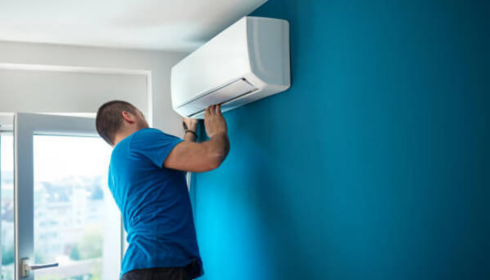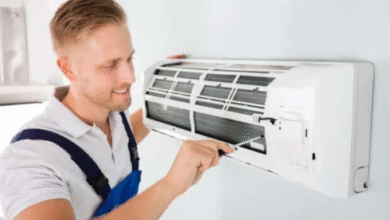Keeping Your Cool: Practical Thoughts on HVAC Care and Energy Savings

When you think about comfort at home, it’s often invisible things that make the biggest difference. You don’t walk into your living room and gush about the ducts or admire how quietly the compressor hums along outside. But if your air conditioning quits in the middle of a sweltering afternoon or the heater falters on a cold night, suddenly the whole household feels upside down. That’s the strange truth about HVAC systems: they’re out of sight, out of mind—until they’re not.
I’ve spent more than one summer day regretting how long I ignored the rattling vent in my hallway. That experience taught me that while HVAC may seem complicated, taking a few practical steps can stretch the life of your system, cut down on costly repairs, and even shave a nice chunk off your utility bill.
A Few Lessons That Stick
Most people know the basics: change filters, don’t block vents, and keep the outdoor unit clear of leaves and debris. But when you dig deeper, there are a handful of hvac tips that genuinely make a noticeable difference. For instance, adjusting your thermostat by just two or three degrees when you’re out of the house saves more energy than you’d expect. Pair that with a programmable thermostat, and suddenly your system isn’t working overtime when no one’s even home.
Another overlooked detail? Airflow. It sounds simple, but closed-off rooms, dirty vents, or bulky furniture jammed against intakes make your unit work harder than necessary. Think of it like running a marathon with a stuffy nose—it’ll get you there, but not without stress on your body.
The Value of Paying Attention Early
HVAC problems rarely appear out of nowhere. They whisper first—a faint grinding noise, a musty smell, or uneven temperatures between rooms. I used to ignore these signs, chalking them up to “just the house settling” until a technician explained that catching minor issues early can prevent big-ticket repairs later.
That’s where good ac maintenance advice comes in. It doesn’t need to be complicated. Scheduling an annual tune-up means a professional checks refrigerant levels, looks for leaks, and makes sure the electrical components aren’t wearing out. These checkups often feel routine, but they’re the difference between replacing a small capacitor for a few bucks or needing a whole new compressor mid-July.
There’s a certain peace of mind in knowing your system’s been inspected before the season hits its peak. Trust me, trying to find an available technician during a heatwave is not an adventure you want to repeat.
Comfort Versus Efficiency
Here’s the dilemma: we want cool air instantly, warm rooms in a snap, and quiet performance. But we also don’t want a heart-stopping utility bill. Balancing comfort with efficiency is tricky, yet possible.
The secret lies in small daily habits. Ceiling fans, for example, are underrated partners for your AC. By moving air around, they make a room feel cooler so you can raise the thermostat a degree or two without feeling it. Simple fixes—like sealing leaky windows or adding a bit of extra insulation—also lighten the load on your HVAC.
The end game isn’t just comfort, but sustainable use. People often underestimate how much of their energy bill comes from heating and cooling. In many households, it’s nearly half. That’s why strategies focusing on energy saving hvac solutions matter. From installing high-efficiency units to upgrading ductwork, these changes aren’t just about the environment—they’re about your wallet too.
Real-World Stories (Because Theory Gets Boring)
I’ll give you an example. A friend of mine bought an older house last year. The HVAC system was outdated, noisy, and wildly inconsistent. He considered replacing the entire thing but decided to try incremental improvements first. After an inspection, he replaced old filters, resealed leaky ducts, and added a smart thermostat. The result? His bills dropped by 20% within three months, and the system suddenly felt “new.”
It’s not a miracle—it’s maintenance. Most HVAC systems don’t fail because they’re poorly built; they fail because they’re neglected. Just like a car needs oil changes, your HVAC needs a little attention here and there. Ignore it, and you’re basically running your AC at full tilt with the brakes on.
When DIY Works (And When It Doesn’t)
There’s plenty you can handle on your own—swapping filters, clearing leaves, vacuuming vents. But there are times you should step aside. Electrical issues, refrigerant leaks, or anything involving the system’s sealed components aren’t DIY projects. Attempting to fix those without proper training isn’t just risky; it can void warranties or even cause damage.
The trick is knowing where to draw the line. If you’re handy, small maintenance tasks can become part of your seasonal routine. But when the AC makes noises that sound like a car engine, or if you notice frost forming on coils, it’s time to call a professional.
The Hidden Benefit: Air Quality
One aspect people often forget about is indoor air quality. HVAC systems don’t just regulate temperature; they influence what you’re breathing. Dirty filters circulate dust, pollen, and allergens throughout your space. For households with kids, elderly family members, or anyone with asthma, that matters a lot.
Investing in better filtration or adding a dehumidifier to the system can make your home healthier, not just more comfortable. It’s a subtle improvement you feel over time—less coughing, better sleep, fewer sinus headaches. And honestly, that’s priceless compared to the minor effort of regular upkeep.
Wrapping It Up Without the Lecture
So, what’s the takeaway here? HVAC systems aren’t glamorous, but they’re crucial. With some thoughtful care—routine checkups, simple daily habits, and knowing when to call for help—you can extend the life of your system, save money, and breathe easier (literally).
I don’t pretend that changing filters or adjusting thermostats is thrilling, but think of it this way: the hours you don’t spend sweating in a broken house or scrambling for emergency repairs are the payoff. The comfort of walking into a cool home after being outside in August, or sipping coffee in a cozy living room during winter, makes the effort worthwhile.
And if you’re like me, you’ll appreciate that quiet reassurance every time you hear the soft, steady hum of an HVAC system doing its job—silently keeping your world comfortable, one degree at a time.




